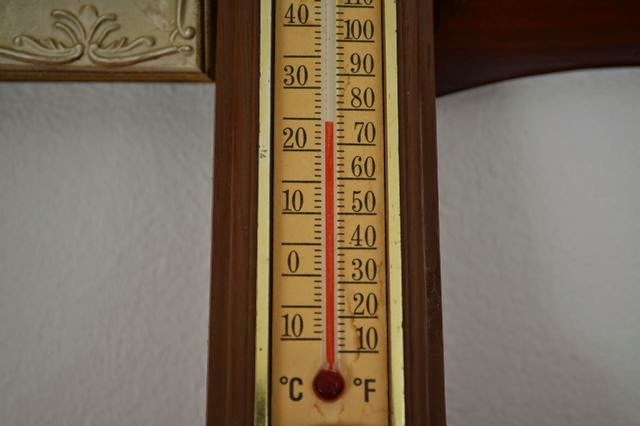 |
| Frozen Wetland |
 |
| Afternoon Temperature is 34°F |
Well, no matter how wet or cold, the furnace makes our home comfortable indoors. Thankfully in this area, most pets live inside.
 |
| Thermostat Setting at 70°F |
Sometimes dogs forget how cold it is out there. Sunlight streaming through the windows is so inviting. They want to feel warmth, beg us to open the door, and then they remember that it is still winter. They continue to do in and out until actual spring comes. It's frustrating yet amusing when they turn around at the door, not even taking one full step out. It looks like an invisible wall of cold air exists in front of their noses.
 |
| Living Room Temperature is 76°F |
You may ask, "How much was saved on energy bills?" or "What scientific evidence is there?" The information involves so many different factors, such as house size, where it is applied, how many applications or coats are used, difference of temperature and electric bill etc. It's a lot.
So, I wanted to simply say, "We love it!"
"How about the dogs?" you may wonder, "Do they like Gaina too?" Our dogs like to lay on the sun heated tile floor. However, this year it's different. They lay in cool shaded areas. So it seems their usual places (the couch or their doggy beds) make them too warm. From time to time they need to cool down. Another bonus, they've stopped going in and out. The sunlight isn't as attractive to them, so it doesn't spoof them anymore. What this means is that they are warm and comfy just like my husband said. That is very good!
Meanwhile, the dogs' duty to protect our territory still continues. Their keen barking breaks my peaceful comfortable afternoon, forcing me to open the back door. They run out to check the perimeter, do a little barking, satisfy their obligation, then demand me to open the door again. Because, for the dogs, there is nothing more to do outside in cold weather. I'd like to say that they are still funny little dogs.
 |
| "It's cold! Let me in" |

















